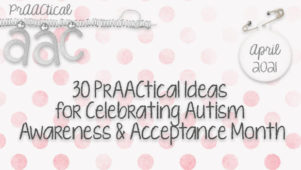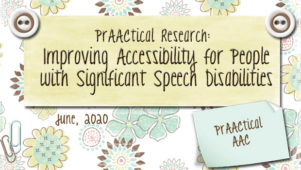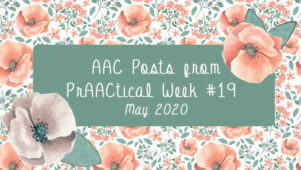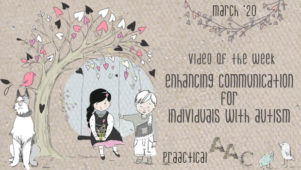5 References That Support the Use of AAC for People with ASD

We occasionally get asked to provide empirical supports for some of the AAC tools and strategies used in our clinical work and teaching. Here are five references that we wanted to pass along.
Ganz, J.B., Earles-Vollrath, T.L., Heath, A.K., Parker, R.I., Rispoli, M.J., & Duran, J.B. (2012). A meta-analysis of single case research studies on aided augmentative and alternative communication systems with individuals with autism spectrum disorders. Journal of Autism and Developmental Disorders, 42,1, 60-74.
- Systematic review of 24 single subject experimental design (SSED) studies investigated the impact of AAC interventions and concluded that aided AAC interventions had positive effects on communication and behavior skills. Although all picture-based AAC systems were effective, learners did best with SGDs or PECs.
Checkley, R., Reidy, L., Chantler, S. Hodge, N., & Holmes, K. (2012). “Black white zebra orange orange”: How children with autism make use of computer-based voice output communication aids in their language and communication at school. Journal of Assistive Technologies, 6, 4, 245 – 258.
- Mixed method study with 3 boys who were observed with and without their SGDs in their reading lessons at school.All three boys showed an increase in MLU after the SGD was introduced.
DeThorne, L.S., Johnson, C.J., Walder, L., & Mahurin-Smith, J. (2009). When “Simon Says” doesn’t work: Alternatives to imitation for facilitating early speech development. American Journal of Speech-Language Pathology, 18, 133-145.
- This is a clinically-oriented discussion paper which aims to help SLPs identify and use evidence-based strategies to facilitate early speech development in young children who do not have good verbal imitation skills, such as those with apraxia and ASD. Authors discuss 6 strategies with research support for improving spoken output. AAC is the first strategy discussed. “In sum, the literature suggests rather convincingly that AAC not only provides a compensatory mechanism for speech difficulties but can also serve as a powerful tool in facilitating natural speech development.” (p. 134)
Olive, M.L., de la Cruz, B., Davis., T.N., Chan, J.M., Lang, R.B., O’Reilly, M.F., & Dickson, S.M. (2007). The effects of enhanced milieu teaching and a voice output communication aid on the requesting of three children with autism. Journal of Autism and Developmental Disorders, 37, 1505-1513.
- Example of an experimental design study that extends the research base on enhanced milieu teaching by pairing it with SGD use. The researchers demonstrated the success of this approach for teaching basic requests in play scenarios.
Shane, H.C., Laubscher, E.H., Schlosser, R.W., Flynn, S., Sorce, J.F., & Abramson, J. (2012). Applying technology to visually support language and communication in individuals with autism spectrum disorders. Journal of Autism and Developmental Disorders, 42, 6, 1228-1235.
- This is a discussion paper that describes a framework for using visual supports and AAC for functional communication and language intervention. The authors discuss how this framework can support improved communication learning by individuals with ASD.
Filed under: PrAACtical Thinking
Tagged With: ASD, references, research
This post was written by Carole Zangari






1 Comment